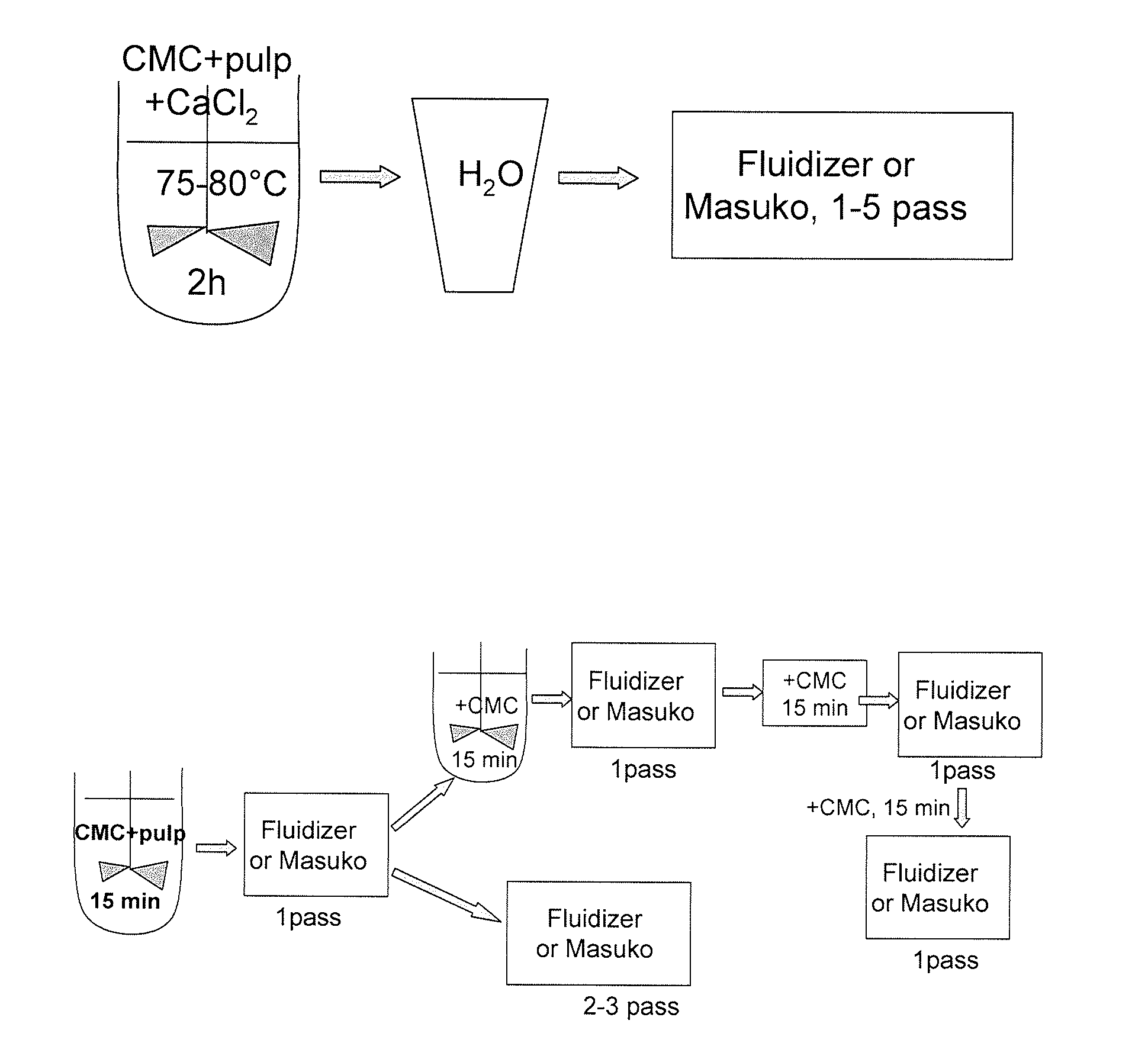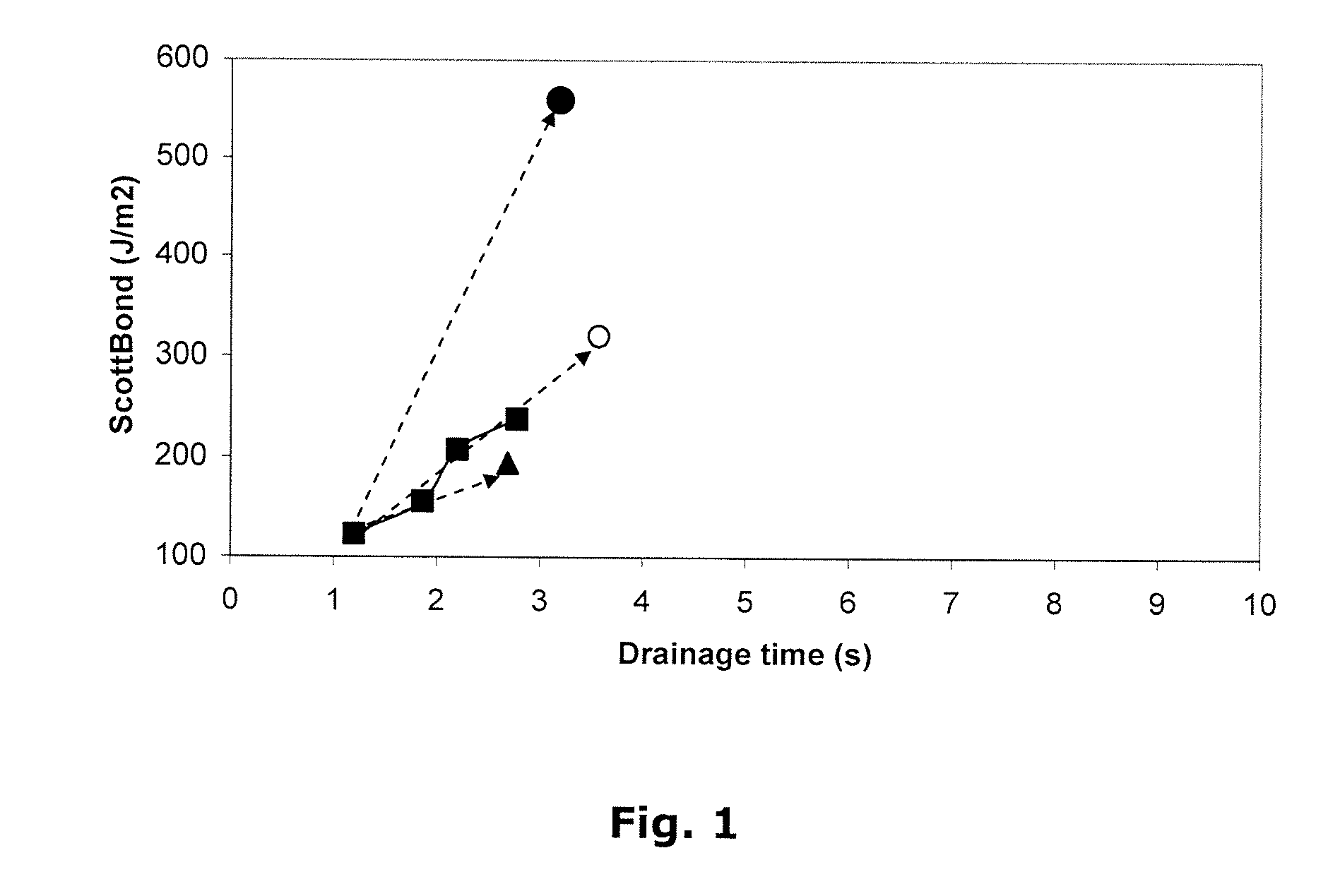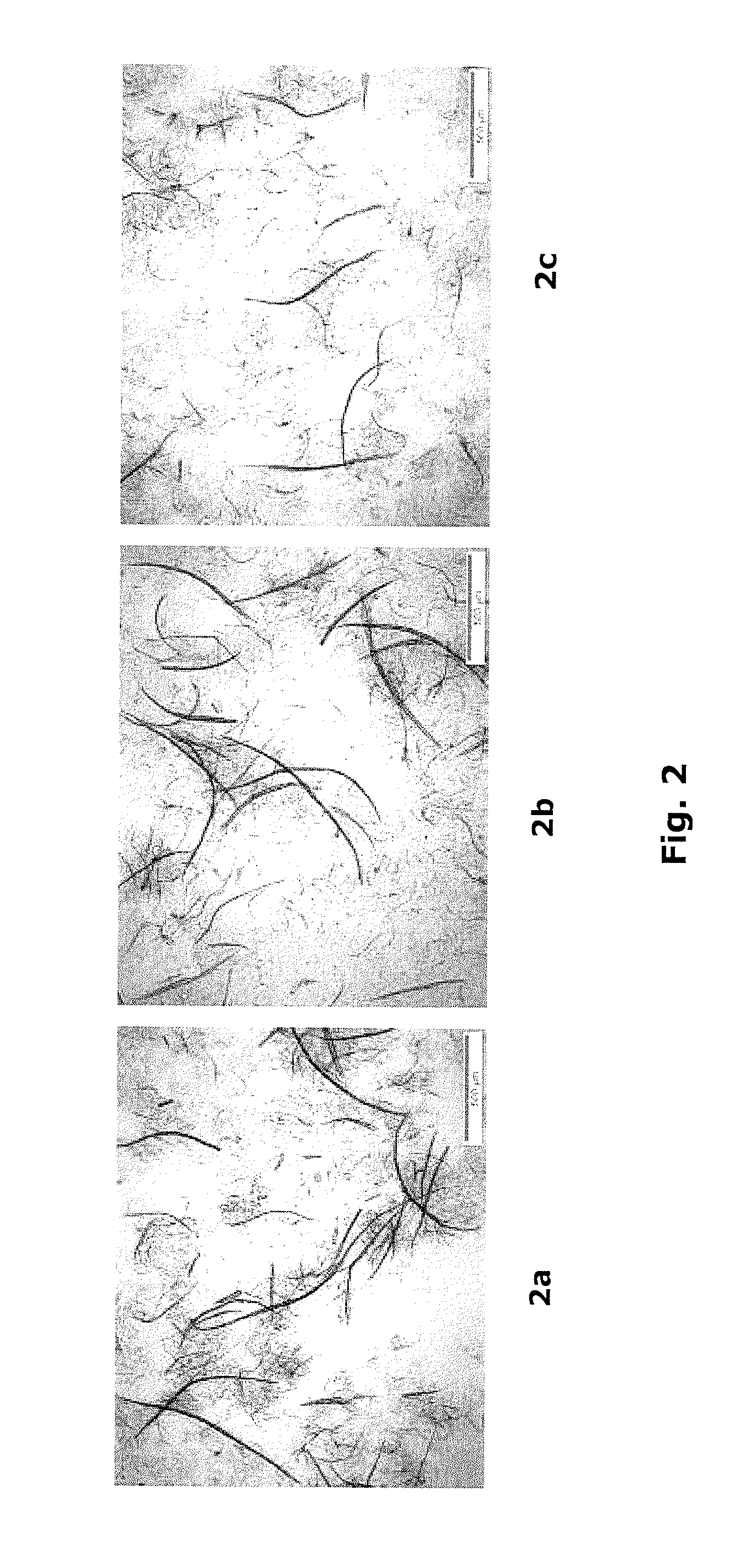Method for producing modified cellulose
a technology of nanofibrillated cellulose and nanofibrillated cellulose, which is applied in the directions of non-fibrous pulp addition, transportation and packaging, vegetable material addition, etc., can solve the problems of high energy consumption and inability to achieve the properties of nanosized materials, and achieve the effect of producing paper with improved properties and energy-saving production of nanofibrillated cellulos
- Summary
- Abstract
- Description
- Claims
- Application Information
AI Technical Summary
Benefits of technology
Problems solved by technology
Method used
Image
Examples
example 1
[0059]Materials
[0060]Pulp
[0061]Bleached, never-dried kraft birch pulps provided by UPM-Kymmene Oyj were used.
[0062]CMC
[0063]Two different CMC grades were used: the high molecular weight Finnfix WRM or low molecular weight Finnfix BW (DS 0.52-0.51) (CP Kelco, Äänekoski, Finland).
[0064]CMC adsorption was carried out with two strategies: either treating the pulp prior to fibrillation with CMC in specific conditions (sorption) or adding the CMC during the fibrillation (addition). The third strategy was to adsorb CMC both prior to fibrillation and during fibrillation.
[0065]CMC Sorption
[0066]The pulp (never dried hardwood) was first washed with deionised water prior to sorption. A slurry with pulp consistency of 30 g / l containing 0.05 M CaCl2 and 0.01 M NaHCO3 was prepared and heated to 75-80° C. 20 mg carboxymethyl cellulose (CMC) was added per gram of pulp (o.d). The pH was adjusted to pH 7.5-8 with 1M NaOH. The slurry was mixed for 2 h at 75-80° C. After sorption the pulp was washed wi...
example 2
[0112]Materials
[0113]Pulps
[0114]Bleached softwood kraft pulp made from Scots Pine (Pinus sylvestris) was aquired from UPM-Kymmene Oyj, Kaukas pulp mill in air dry sheets. The dry pulp samples were swollen in deionized water and beaten in a Valley beater according to standard SCAN-C 25:76. Unless otherwise stated the beating time was 10 min. Thereafter any remaining metal ions were removed by acid treatment, and the fibres were washed into their Na-form according to method described by Swerin et al. (1990). Finally the samples were dewatered and stored in a refrigerator at ca. 20% consistency. Prior to use the samples were diluted to desired consistency and cold disintegrated according to standard SCAN-C 18:65. The salt concentration of the suspensions was adjusted to 9 mM NaCl and 1 mM NaHCO3, and the pH was adjusted to 8.0.
[0115]Polyelectrolytes
[0116]Two different CMC (carboxymethyl cellulose) grades from CP Kelco Oy (Äänekoski, Finland) were used for preparation of modified NFC. T...
PUM
| Property | Measurement | Unit |
|---|---|---|
| temperature | aaaaa | aaaaa |
| temperature | aaaaa | aaaaa |
| pH | aaaaa | aaaaa |
Abstract
Description
Claims
Application Information
 Login to View More
Login to View More - R&D
- Intellectual Property
- Life Sciences
- Materials
- Tech Scout
- Unparalleled Data Quality
- Higher Quality Content
- 60% Fewer Hallucinations
Browse by: Latest US Patents, China's latest patents, Technical Efficacy Thesaurus, Application Domain, Technology Topic, Popular Technical Reports.
© 2025 PatSnap. All rights reserved.Legal|Privacy policy|Modern Slavery Act Transparency Statement|Sitemap|About US| Contact US: help@patsnap.com



